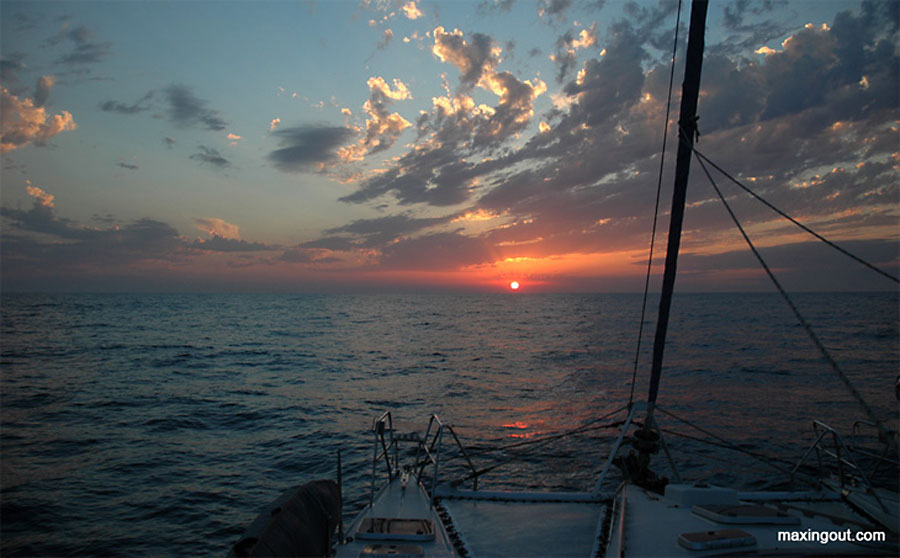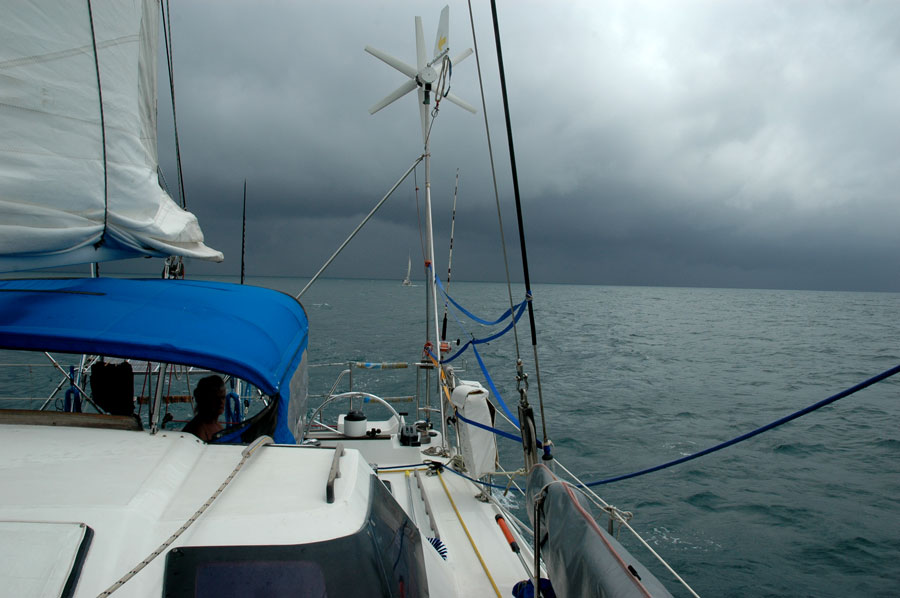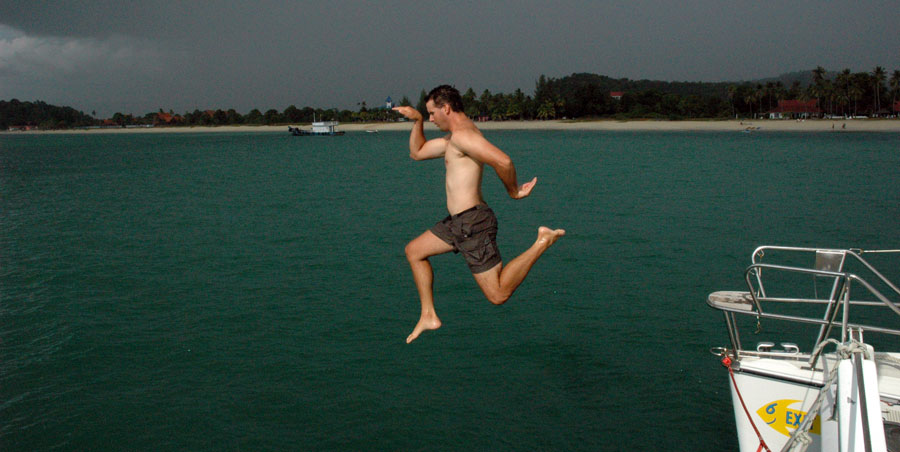DON'T LISTEN TO THE VOICE OF NEGATIVITY.
LISTEN TO THE SOUND OF YOUR DREAMS!
You are never safe from negation.
Unchecked negativity can rapidly flush the achievements of a lifetime
down the drain. Negativity is an ever present and unwanted companion
that continually invites you to abandon your dreams.
Everyone moving in the direction of their dreams will suffer defeats and
sometimes feel their dreams are impossible. Negativity will attempt to
derail them on the path of achievement, and the temptation to quit will
be strong. Everyone wants life to be easy. They want either no
opposition at all or opposition to politely step out of the way as they
move toward their goals. This is unrealistic. People who achieve their
dreams arenít strolling through life; they are climbing the mountain of
difficulty, and hard work and perseverance are the only way to reach the
top.
If you ever reach your dreams, it will be because you stopped listening
to the voice of fear and negation. You stopped looking at your
limitations and stopped constructing barriers that exist only in your
mind.
When you decide to sail around the world on a sailboat, you encounter an
ocean of opposition. A crowd of naysayers and critics freely offer
unsolicited opinions and advice concerning your proposed
circumnavigation of the globe. Friends are sure you are having a
midlife crisis. When you write the check to pay for your yacht, they
inform you that you have made a down payment on an expensive funeral at
sea. They tell you all of that money could have been spent on a nice
house, 100 channels of cable television, and the help of a good
therapist to get you over this foolish desire to sail around the world.
The easiest thing to find on planet earth is someone to tell you why
your dreams are too expensive, too dangerous, and a waste of time. With
cheerleaders like that, itís amazing anyone pursues their dreams.
Itís not just family and friends who question your judgment. During
moments of adversity, you wonder whether you are heading down a one way
street in the wrong direction. The voice of fear starts a powerful
negative chorus that repeats itself thousands of time, and if you start
listening to its message, your dreams will evaporate.
What would happen if you fall off the boat at night at sea? What
happens if a whale rams your boat? What happens if you hit a floating
log, or if a ship runs you down at night? What happens if a hurricane
strikes? What happens if you meet pirates or drug runners? What if
your boat is struck by lightening? What if your boat runs up on a reef
and is destroyed on a remote deserted island? What if you get sick when
you are at sea? What if you have appendicitis when you are one thousand
miles from land? What if you hit your head or break a leg? What if
your boat turns upside down? What if there is a fire or explosion on
board? What if you collide at night with a floating container that has
fallen off a ship? What if you become seasick? Who will stay awake at
night and stand watch while you sail offshore? What if your boat sinks
and you lose all of the money you invested in the yacht? What if you
loose your medical skills while you sail around the world? How will you
ever be able to return to the practice of medicine?
I experienced all of these negative thoughts many times before I
purchased my yacht. Those thoughts could have stopped my voyage before
it got started. My dreams would have been stillborn if I listened to
the voice of fear.
If I listed all of the reasons why I shouldnít sail around the world in
a small sailboat, I could write a hundred page document full of
disaster, difficulty, and despair. I know dozens of reasons why my
dreams are too expensive and involve too much risk. If I listen to the
voice of fear and negativity, I will sit at the dock and watch everyone
else sail on the ocean of their dreams.
Once I hoisted my sails in Fort Lauderdale and started my voyage, I had
dozens of opportunities for negativity to sink the ship of my dreams.
On my first night at sea, I experienced the most powerful thunderstorm I
encountered on the entire trip around the world. Surely, that must have
been a sign sailing around the world is a bad idea. It was a message to
stop the voyage in the Bahamas, anchor the boat in Chicken Town, and
check in to Hotel California where I could never leave, but at least I
would be safe.
When I reached the Panama Canal, the voice of fear again tried to cancel
my dream of sailing around the world. There is no need to transit the
Panama Canal and sail in the Pacific. Just stay in the Caribbean and
have a wonderful cruise. The Pacific Ocean is a vast body of water with
reefs, cyclones, and killer whales that could destroy my yacht. The
voice of fear told me to stay in the Caribbean forever.
After I arrived in the Pacific, the voice of fear started a new verse
with the same fearful chorus. Itís three thousand miles from the
Galapagos Islands to French Polynesia. You are at sea day and night for
three weeks. You donít see any other humans for twenty-one days, and
thereís no one to rescue you if you get into trouble. Donít go. Stay
in Nowhere Land where youíll be safe.
After I arrived in French Polynesia, the voice of fear said to skip
sailing to the Tuamotu Archipelago. You will hit a reef as you sail
through the atolls. The passes through the reefs into the lagoons are
too small, and once inside you will be trapped. A storm could easily
destroy your yacht when itís inside a potentially treacherous lagoon.
Sailing in the Tuamotus involves high risk. Skip them and sail directly
to Tahiti.
After I sailed across the Pacific Ocean, it was necessary to sail twelve
hundred miles south from Fiji to New Zealand. Itís a big trip into
higher latitudes and the voice of fear again rippled through the
cruising fleet. The talk was of storms with special emphasis on the
recent Queenís Birthday storm in which lives and yachts were lost.
Sailing in the higher southern latitudes presented new and unfamiliar
risks. The voice of fear filled everyone with a sense of foreboding.
Sailing to and from New Zealand is scary. Some mariners left their
yachts in storage in Fiji to avoid the sail south. Other sailors loaded
their yachts on freighters and shipped them home.
Several weeks after I arrived in New Zealand, I rolled the car I was
driving. I broke both legs, fractured five ribs, punctured one lung and
had internal bleeding. I was transfused seven units of blood, had three
surgeries, and spent two months in the hospital. Surely, this disaster
proved sailing around the world was a bad idea. The sensible thing
would be to sell the yacht, buy a plane ticket to Nowhere Land, and
start watching cable television where I would be safe and secure for the
rest of my life.
Negativity can overtake you anywhere on the path to your dreams. I
could have stopped my trip around the world a dozen times before I
reached New Zealand. Surrendering dreams is easy. You can do it
anywhere or anytime. Most people will tell you that you are doing the
right thing when you sell your dream machine and join the ranks of the
Life Long Disoriented.
Negativity is a stalker that never goes away; itís your unfailing and
unwanted companion eternally inviting you to abandon your dreams.
Negativity is a dream
stealer. Don't listen to the voice of negativity. Instead, listen to
the sound of your dreams.
Click on
this button to tell your friends about
Listen To The Sound Of Your Dreams.


CLOUDS ARE A SAILOR'S FRIEND
Clouds are a sailor's friend. As long
as there are clouds in the sky, you have a good idea about the type of
sailing conditions you will experience for the next couple of hours.
They won't necessarily tell you what's going to happen tomorrow or the
day after, but if if you listen to what they say, it's not too hard to
stay out of harms way when you are sailing offshore.
Clouds start at the sea surface extending up to eighteen-thousand feet,
and when you look at them, you can figure out what's happening to the
wind at different altitudes. High cirrus clouds tell you what's going
on in the upper levels, and trade wind cumuli tell you what's happening
at the lower levels. When you look at their speed and direction of
movement, you discover what the winds are doing at your location.
Clouds aren't static. Their size and shape continually change
throughout the day. Trade wind cumuli increase in size and height until
late in the day. As the sun sets you can watch them shrink as they
literally melt away in front of your eyes.
Thunderstorms announce their presence as vertically developed cumulus
clouds that go all the way to eighteen-thousand feet, and they usually
do it long before lightning and thunder make their appearance. When
clouds are taller than they are wide, you have a condition called
vertical development. When you are sailing offshore, you always look to
see how much vertical development there is in the cumulus clouds,
because you know it's highly unlikely to have thunder and lightning with
associated squalls unless there is significant vertical development.

It's easy to avoid thunderstorms and squalls, because you can see them
forming and alter your course to avoid them. There's no need to be
pummeled by fierce downdrafts of forty to sixty knots; you simply sail
away from them or around them. I usually don't get caught by squalls
and thunderstorms unless I am not paying attention to the clouds, or if
I am at anchor, and there's nothing I can do to avoid them because I am
stationary.
Paying attention to clouds isn't rocket science, and you don't need an
advanced degree in meteorology to use clouds to your benefit. You
simply need to pay attention to what is going on around you.
In thirty-three thousand miles of sailing I have been in squalls quite a
few times, and I can't remember a single instance in which I was caught
off guard with too much sail up because I pay attention to what the
clouds are saying. I am careful to not be over-canvassed, because
blowing out sails and loosing a mast in high winds is expensive and
dangerous. I sail in damage control mode most of the time, and that
means fear is not a member of our crew.
The
sailing photo at the top of the page shows Exit Only confidently
motor-sailing into the sunset. The low level cumulus clouds are
breaking up as the sun sets over the horizon. Those clouds tell me it's
going to be a quiet night at sea, and I feel good.

This photo is a fully developed
example of "red sky at night, sailor's delight." A red sky in the
evening usually means the weather is going to be relatively benign
during the night. It will be a "no worries mate evening," and that's
reassuring because there are lots of clouds in the sky.
Even when the sky looks ugly with billowing cumulonimbus clouds on the
horizon and black squalls heading your way, you have plenty of time to
prepare for the onslaught. Thunderstorms don't last forever, and
squalls pass quickly by. If you listen to what the clouds are saying,
you will handle these meteorological inconveniences in stride.
You will reduce your sail to a safe level until the tempest is over.
The real problem isn't the wind and waves.
It's the storm of thoughts blowing though your mind that gets you into
trouble. If you listen to the voice of fear, your sailing adventure
becomes a nightmare. But if you listen to the clouds, you will
recognize the voice of fear for the imposter that it is. People who
sail offshore in a well-found yacht have little to fear from the weather
ninety-eight percent of the time, and the clouds usually tell you what
to do.
The clouds are your friends, and if you listen to what they say,
your life will be good as you sail on the ocean of your dreams.

TAKE
THE PLUNGE AND ORDER
THE RED SEA
CHRONICLES. JUMP INTO A
GREAT SAILING AND CRUISING DVD. YOU WILL BE GLAD THAT YOU DID!